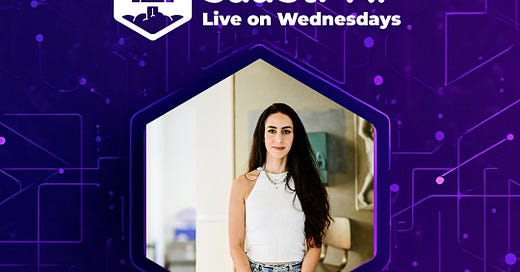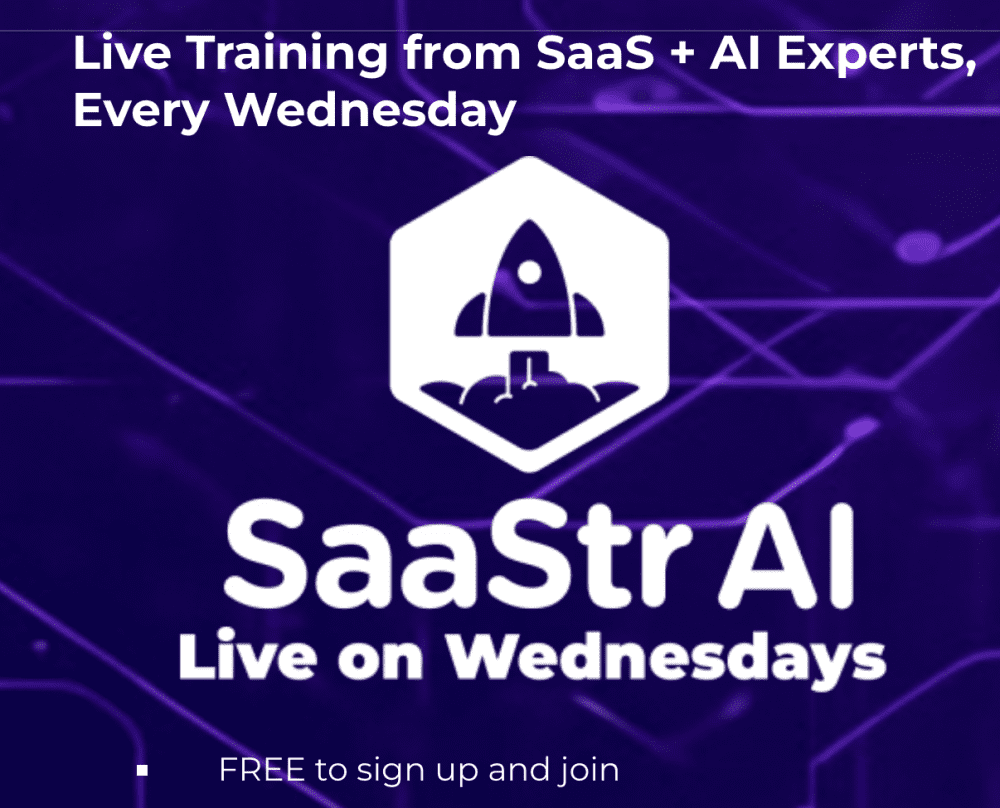The Most Unconventional CMO Story in B2B
Raaz Herzberg joined Wiz as employee #5. She led product for 2.5 years. Then their CEO asked her to take over marketing.
Her response? "No. What are you talking about?"
Today, Wiz is in the process of being acquired for a stunninga $32 billion by Google. And Raaz just shared exactly how she built their marketing engine from zero marketing experience to hyper-growth success.
Here are the key lessons every founder and marketer needs to know:
The Core Problem That Changes Everything
"Nobody had heard of Wiz."
That was it. That was Raaz's entire marketing strategy in the beginning. Not MQLs, not pipeline attribution, not brand awareness metrics. Just: people need to know we exist.
The pain was real: "We would meet a customer, have a great first meeting, and they would say 'I wish I heard about you three months ago when I just signed with one of your competitors.'"
The lesson: Sometimes the most sophisticated marketing strategy is solving the most obvious problem first.
How to Stand Out When You Know Nothing About Marketing
Roz's advantage wasn't marketing expertise—it was domain expertise. She knew cybersecurity inside and out. She knew how everything else in the space looked and sounded.
Her strategy: Be different on purpose.
"Security products were typically black and red, scaring people about bad things that could happen. As a technical practitioner, I never wanted to hear that. My job is hard enough."
So Wiz went the opposite direction:
Made security fun and approachable
Used inside jokes the community would get
Created content that practitioners actually wanted to consume
Example: They released a meditation app for cyber practitioners on April Fool's Day—with guided meditation sessions full of deep cyber jokes. It went viral in their exact target audience.
The lesson: Your biggest competitive advantage might be knowing your audience better than traditional marketers do.
The Hiring Philosophy That Built a $23B Company
"Every single person you hire should be your best hire ever. Unless you leave an interview very excited—like 'I wish this person was here right now'—don't hire them."
Raaz is obsessed with hiring. She spends at least a couple hours per week on it, even as CMO of a $23B company.
Her test for identifying "doers" vs "strategists": When asking about problems they've solved, doers can talk about every tiny detail. People who just designed the process stop at a high level.
Her first hires: Not cyber experts. She already knew cyber. She hired people who knew how to make things go viral and could execute end-to-end.
The lesson: Hire for curiosity and execution ability over domain expertise when you already have the domain covered.
The Untraditional Marketing Org Structure That Actually Works
A year ago, Raaz did something radical: She moved field marketing out of her org and into sales.
"I found that being a successful field marketer has more to do with tight alignment with your regional sales director. That's the KPI—are they happy with the field marketer?"
She kept brand, content, and demand gen. Sales got field marketing, events, and regional activation.
The result: Better alignment, clearer ownership, and field marketing that actually works for sales.
The lesson: Don't be afraid to break traditional org structures if it serves the business better.
How AI is Changing Marketing (According to Someone Actually Using It)
"Every single person on my team has dramatically transformed how they work. In team meetings, every person has to show what they're doing with AI."
Raaz's take: AI doesn't replace superstars—it makes superstars 100x more effective.
"I've definitely slowed hiring. Amazing people are now 100 times more effective. But I still need amazing people."
Example: They built a "Wiz spell checker" GPT that every employee uses for customer communications. It ensures technical accuracy, brand compliance, and the right tone (humble, never arrogant).
The lesson: Don't try to reskill average performers for AI. Hire curious people who will figure it out themselves.
The Content Strategy That Actually Builds Pipeline
Raaz tracks two key audiences differently:
CISOs (budget approvers): LinkedIn growth, exponential quarter-over-quarter growth
Users (practitioners): Twitter, InfoSec communities, technical content engagement
Content philosophy: "How interested are you in hearing about a tool you don't use? Not very. But if I know your domain and bring truly the best content, you'll subscribe."
Examples that work:
CTFs (Capture The Flag challenges) - complex security riddles that teach hands-on skills
Deep technical content from actual security researchers
Industry insights that make practitioners better at their jobs
The lesson: Content marketing works when you give real value to people who aren't your customers yet.
Measuring Brand When You Can't Really Measure Brand
"I track exponential growth. I want 20%+ quarter over quarter growth in key indicators. I don't care about attribution models—I want exponential curves."
Key metrics Raaz actually watches:
LinkedIn follower growth in target buyer personas
Community engagement in practitioner spaces
"Room temperature" - how warm prospects are when sales gets in front of them
"When I started, we'd walk into rooms cold. Now the room is warm and our AEs feel it."
The lesson: Sometimes the best brand metrics are qualitative feedback from your sales team.
What's Next for a $32B Company
Despite the massive valuation, Raaz sees this as "early days."
"90% of workloads aren't even on cloud yet. AI is pushing teams faster to cloud and new technology adoption. We've had a great start, but we're just starting."
The mindset: Even at $32B, think like you're still in the early innings.
The Bottom Line
Raaz Herzberg built one of the most successful B2B marketing engines in recent history without any marketing background. Her secret wasn't marketing expertise—it was:
Solving obvious problems first (nobody knows we exist)
Using domain expertise as competitive advantage (knowing the audience better than marketers)
Hiring for curiosity over experience (doers who figure things out)
Breaking traditional structures when they don't work (moving field to sales)
Embracing AI to amplify superstars (not replace average performers)
Creating content that practitioners actually want (not product-focused content)
Never compromising on hiring (every hire should be your best hire ever)
The lesson for every founder: Sometimes the best CMO isn't someone with 20 years of marketing experience. Sometimes it's someone who understands your customers better than anyone else and isn't afraid to figure out the rest.
5 More Tactical Marketing Insights from Wiz's $32B Journey:
Enable everyone, not just marketing: Raaz built AI tools for the entire company to use, like their "Wiz spell checker" GPT that ensures every customer communication is technically accurate and on-brand. Marketing's job isn't just external—it's helping everyone communicate better.
Mediocrity is now easy to automate: "In the AI world, mediocrity is easy to automate. That's why you need people who can't be automated—the curious ones who figure things out." The bar for human performance is getting higher, not lower.
Stop making hour-long training: "I can't expect people to watch hour-long training. I'd rather have short 5-minute explanations you can pull on demand." Enablement needs to match modern attention spans and work styles.
Stay humble even when you're winning: One of Wiz's core brand principles is humility. When they lose a deal, AEs are trained to say "we'd love to learn more" rather than anything defensive. This approach builds long-term relationships even in losses.
Deep, high quality technical content still wins: While AI floods the market with shallow SEO content, Roz doubles down on complex, hands-on security challenges (CTFs) that require real expertise to create. "There's a lot of work that goes into it. It's very deep content. And those things always work because you're truly giving somebody really good value."
Want more insights like this? Join us for SaaStr Live sessions every Wednesday and get access to conversations with the leaders building the next generation of SaaS companies.












Share this post